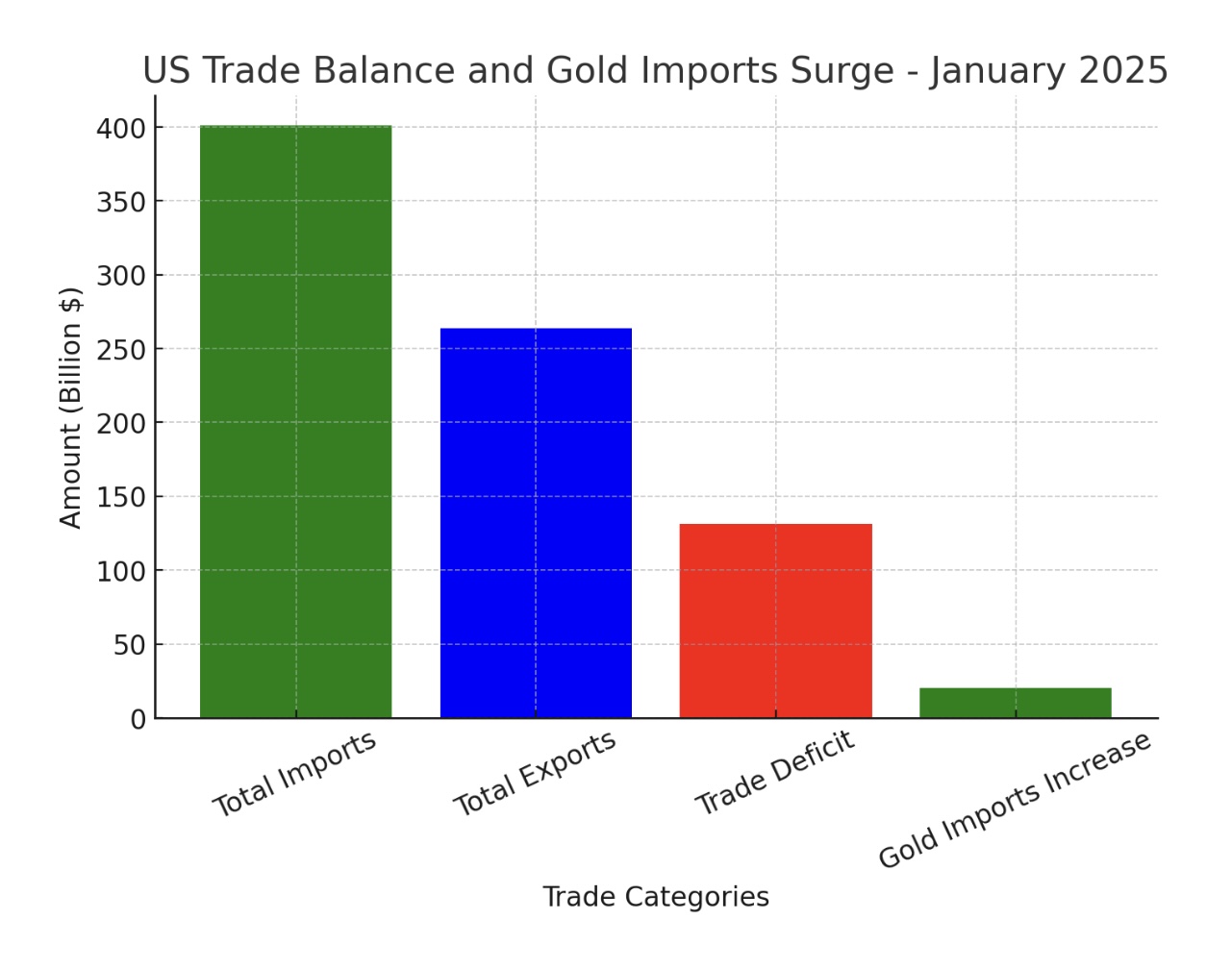The U.S. trade deficit surged to an all-time high in January as businesses rushed to import goods ahead of new tariffs set by President Donald Trump. According to the Commerce Department, the trade gap in goods and services expanded by 34% from December, reaching $131.4 billion. This was much higher than expected by most economists.
Imports Reach Record Levels
The total value of imported goods rose sharply by 10% to a record $401.2 billion, while exports increased only slightly, by 1.2%. This imbalance shows that the U.S. was bringing in far more products from overseas than it was selling abroad.
One of the biggest changes in trade was the increase in imports of industrial supplies and materials, particularly gold bullion. Imports of finished metal products, including gold, jumped by $20.5 billion. This marked the second straight month of large increases in gold imports. Much of this gold came from Switzerland, which led to a significant rise in that country’s trade deficit.
Why Are Gold Imports Rising?
A surge in gold imports often happens when investors and central banks expect economic uncertainty or inflation. Since gold is seen as a safe investment, high demand could suggest that businesses, governments, and wealthy individuals are preparing for economic turbulence.
Impact on the Economy and Gold Prices
The record-high trade deficit indicates that American businesses were stockpiling goods before tariffs made imports more expensive. This means future imports might slow down, which could slightly ease the trade deficit in the coming months.
More importantly, the large increase in gold imports suggests a growing demand for gold as a secure asset. If this trend continues, it could drive gold prices higher in the future. When central banks and large institutions accumulate gold, it often signals concerns about inflation, economic instability, or the weakening value of paper currency.
Conclusion
The sharp rise in the U.S. trade deficit shows how businesses responded to upcoming tariff changes by importing as much as possible before new costs hit. At the same time, the massive surge in gold imports highlights growing interest in gold as a safe-haven investment. If this accumulation continues, it could push gold prices higher, reflecting fears of inflation or economic uncertainty. Investors and policymakers should closely watch this trend as it may indicate major shifts in the global economy.


